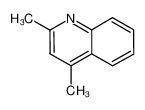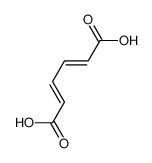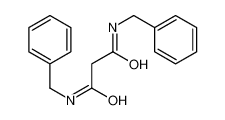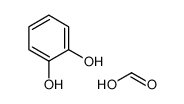1.Identification
1.1 GHS Product identifier
| Product name | acetic acid |
|---|
1.2 Other means of identification
| Product number | - |
|---|---|
| Other names | Glacial acetic acid |
1.3 Recommended use of the chemical and restrictions on use
| Identified uses | For industry use only. Processing Aids and Additives |
|---|---|
| Uses advised against | no data available |
1.4 Supplier's details
| Company | MOLBASE (Shanghai) Biotechnology Co., Ltd. |
|---|---|
| Address | Floor 4 & 5, Building 12, No. 1001 North Qinzhou Road, Xuhui District, Shanghai, China |
| Telephone | +86(21)64956998 |
| Fax | +86(21)54365166 |
1.5 Emergency phone number
| Emergency phone number | +86-400-6021-666 |
|---|---|
| Service hours | Monday to Friday, 9am-5pm (Standard time zone: UTC/GMT +8 hours). |
2.Hazard identification
2.1 Classification of the substance or mixture
Flammable liquids, Category 3
Skin corrosion, Category 1A
2.2 GHS label elements, including precautionary statements
| Pictogram(s) |   |
|---|---|
| Signal word | Danger |
| Hazard statement(s) | H226 Flammable liquid and vapour H314 Causes severe skin burns and eye damage |
| Precautionary statement(s) | |
| Prevention | P210 Keep away from heat, hot surfaces, sparks, open flames and other ignition sources. No smoking. P233 Keep container tightly closed. P240 Ground and bond container and receiving equipment. P241 Use explosion-proof [electrical/ventilating/lighting/...] equipment. P242 Use non-sparking tools. P243 Take action to prevent static discharges. P280 Wear protective gloves/protective clothing/eye protection/face protection. P260 Do not breathe dust/fume/gas/mist/vapours/spray. P264 Wash ... thoroughly after handling. |
| Response | P303+P361+P353 IF ON SKIN (or hair): Take off immediately all contaminated clothing. Rinse skin with water [or shower]. P370+P378 In case of fire: Use ... to extinguish. P301+P330+P331 IF SWALLOWED: Rinse mouth. Do NOT induce vomiting. P363 Wash contaminated clothing before reuse. P304+P340 IF INHALED: Remove person to fresh air and keep comfortable for breathing. P310 Immediately call a POISON CENTER/doctor/… P321 Specific treatment (see ... on this label). P305+P351+P338 IF IN EYES: Rinse cautiously with water for several minutes. Remove contact lenses, if present and easy to do. Continue rinsing. |
| Storage | P403+P235 Store in a well-ventilated place. Keep cool. P405 Store locked up. |
| Disposal | P501 Dispose of contents/container to ... |
2.3 Other hazards which do not result in classification
none
3.Composition/information on ingredients
3.1 Substances
| Chemical name | Common names and synonyms | CAS number | EC number | Concentration |
|---|---|---|---|---|
| acetic acid | acetic acid | 64-19-7 | none | 100% |
4.First-aid measures
4.1 Description of necessary first-aid measures
General advice
Consult a physician. Show this safety data sheet to the doctor in attendance.
If inhaled
Fresh air, rest. Half-upright position. Refer immediately for medical attention.
In case of skin contact
Remove contaminated clothes. Rinse and then wash skin with water and soap. Rinse skin with plenty of water or shower for at least 15 minutes. Refer immediately for medical attention.
In case of eye contact
Rinse with plenty of water (remove contact lenses if easily possible). Refer immediately for medical attention.
If swallowed
Rinse mouth. Do NOT induce vomiting. If within a few minutes after ingestion, one small glass of water may be given to drink. Refer immediately for medical attention.
4.2 Most important symptoms/effects, acute and delayed
Breathing of vapors causes coughing, chest pain, and irritation of nose and throat; may cause nausea andvomiting. Contact with skin and eye causes burns. (USCG, 1999)
Excerpt from ERG Guide 153 [Substances - Toxic and/or Corrosive (Combustible)]: TOXIC; inhalation, ingestion or skin contact with material may cause severe injury or death. Contact with molten substance may cause severe burns to skin and eyes. Avoid any skin contact. Effects of contact or inhalation may be delayed. Fire may produce irritating, corrosive and/or toxic gases. Runoff from fire control or dilution water may be corrosive and/or toxic and cause pollution. (ERG, 2016)
Excerpt from ERG Guide 132 [Flammable Liquids - Corrosive]: May cause toxic effects if inhaled or ingested/swallowed. Contact with substance may cause severe burns to skin and eyes. Fire will produce irritating, corrosive and/or toxic gases. Vapors may cause dizziness or suffocation. Runoff from fire control or dilution water may cause pollution. (ERG, 2016)
4.3 Indication of immediate medical attention and special treatment needed, if necessary
Garlic contains many sulfhydryl compounds that act as antioxidants. However, the role of nitric oxide (NO) in inflammation is controversial. The aim of the present study is to investigate the possible protective effect of garlic against acetic acid-induced ulcerative colitis in rats, as well as the probable modulatory effect of L-arginine (NO precursor) on garlic activity. Intra-rectal inoculation of rats with 4% acetic acid for 3 consecutive days caused a significant increase in the colon weight and marked decrease in the colon length. In addition, acetic acid induced a significant increase in serum levels of nitrate as well as colonic tissue content of malondialdehyde (MDA). Moreover, colonic tissue contents of glutathione (GSH), superoxide dismutase (SOD) and catalase (CAT) were markedly reduced. On the other hand, pre-treatment of rats with garlic (0.25 g/kgbwt, orally) for 4 consecutive weeks and 3 days during induction of colitis significantly reduced the increase in the colon weight induced by acetic acid and ameliorated alterations in oxidant and antioxidant parameters. Interestingly, oral co-administration of garlic (0.25 g/kgbwt) and L-arginine (625 mg/kgbwt) for the same period of garlic administration mitigated the changes in both colon weight and length induced by acetic acid and increased garlic effect on colon tissue contents of MDA and GSH. In conclusion, L-arginine can augment the protective effect of garlic against ulcerative colitis; an effect that might be mainly attributed to its NO donating property resulting in enhancement of garlic antioxidant effect...
5.Fire-fighting measures
5.1 Extinguishing media
Suitable extinguishing media
Use water spray, dry chemical, "alcohol resistant" foam, or carbon dioxide. Use water to keep fire-exposed containers cool.
5.2 Specific hazards arising from the chemical
Special Hazards of Combustion Products: Irritating vapor generated when heated. (USCG, 1999)
Excerpt from ERG Guide 153 [Substances - Toxic and/or Corrosive (Combustible)]: Combustible material: may burn but does not ignite readily. When heated, vapors may form explosive mixtures with air: indoors, outdoors and sewers explosion hazards. Those substances designated with a (P) may polymerize explosively when heated or involved in a fire. Contact with metals may evolve flammable hydrogen gas. Containers may explode when heated. Runoff may pollute waterways. Substance may be transported in a molten form. (ERG, 2016)
Excerpt from ERG Guide 132 [Flammable Liquids - Corrosive]: Flammable/combustible material. May be ignited by heat, sparks or flames. Vapors may form explosive mixtures with air. Vapors may travel to source of ignition and flash back. Most vapors are heavier than air. They will spread along ground and collect in low or confined areas (sewers, basements, tanks). Vapor explosion hazard indoors, outdoors or in sewers. Those substances designated with a (P) may polymerize explosively when heated or involved in a fire. Runoff to sewer may create fire or explosion hazard. Containers may explode when heated. Many liquids are lighter than water. (ERG, 2016)
5.3 Special protective actions for fire-fighters
Wear self-contained breathing apparatus for firefighting if necessary.
6.Accidental release measures
6.1 Personal precautions, protective equipment and emergency procedures
Use personal protective equipment. Avoid dust formation. Avoid breathing vapours, mist or gas. Ensure adequate ventilation. Evacuate personnel to safe areas. Avoid breathing dust. For personal protection see section 8.
6.2 Environmental precautions
Remove all ignition sources. Personal protection: chemical protection suit including self-contained breathing apparatus. Do NOT let this chemical enter the environment. Collect leaking liquid in sealable containers. Cautiously neutralize spilled liquid with sodium carbonate only under the responsibility of an expert.
6.3 Methods and materials for containment and cleaning up
Collect leaking liquid in sealable containers. Cautiously neutralize spilled liquid with sodium carbonate only under the responsibility of an expert. Wash away remainder with plenty of water (extra personal protection: chemical protection suit including self-contained breathing apparatus).
7.Handling and storage
7.1 Precautions for safe handling
Avoid contact with skin and eyes. Avoid formation of dust and aerosols. Avoid exposure - obtain special instructions before use.Provide appropriate exhaust ventilation at places where dust is formed. For precautions see section 2.2.
7.2 Conditions for safe storage, including any incompatibilities
Fireproof. Separated from food and feedstuffs, strong oxidants, strong acids and strong bases. Store only in original container. Well closed. Keep in a well-ventilated room. Store in an area without drain or sewer access.Store in a dry, well-ventilated place. Separate from oxidizing materials and alkaline substances.
8.Exposure controls/personal protection
8.1 Control parameters
Occupational Exposure limit values
Recommended Exposure Limit: 10-hour Time-Weighted Average: 10 ppm (25 mg/cu m).
Recommended Exposure Limit: 15-minute Short-Term Exposure Limit: 15 ppm (37 mg/cu m).
Biological limit values
no data available
8.2 Appropriate engineering controls
Handle in accordance with good industrial hygiene and safety practice. Wash hands before breaks and at the end of workday.
8.3 Individual protection measures, such as personal protective equipment (PPE)
Eye/face protection
Safety glasses with side-shields conforming to EN166. Use equipment for eye protection tested and approved under appropriate government standards such as NIOSH (US) or EN 166(EU).
Skin protection
Wear impervious clothing. The type of protective equipment must be selected according to the concentration and amount of the dangerous substance at the specific workplace. Handle with gloves. Gloves must be inspected prior to use. Use proper glove removal technique(without touching glove's outer surface) to avoid skin contact with this product. Dispose of contaminated gloves after use in accordance with applicable laws and good laboratory practices. Wash and dry hands. The selected protective gloves have to satisfy the specifications of EU Directive 89/686/EEC and the standard EN 374 derived from it.
Respiratory protection
Wear dust mask when handling large quantities.
Thermal hazards
no data available
9.Physical and chemical properties
| Physical state | clear liquid |
|---|---|
| Colour | Clear, colorless liquid |
| Odour | Pungent |
| Melting point/ freezing point | 17°C(lit.) |
| Boiling point or initial boiling point and boiling range | 117-118°C(lit.) |
| Flammability | Class II Combustible Liquid: Fl.P. at or above 37.78°C and below 60°C.Flammable. |
| Lower and upper explosion limit / flammability limit | Lower flammable limit: 4.0% by volume; Upper flammable limit: 19.9% by volume |
| Flash point | 40°C |
| Auto-ignition temperature | 426.67°C |
| Decomposition temperature | no data available |
| pH | Aqueous solution 1.0 molar = 2.4; 0.1 molar = 2.9; 0.01 molar = 3.4 |
| Kinematic viscosity | 1.056 mPa-s at 25°C |
| Solubility | In water:miscible |
| Partition coefficient n-octanol/water (log value) | no data available |
| Vapour pressure | 11.4 mm Hg ( 20 °C) |
| Density and/or relative density | 1.049g/mLat 25°C(lit.) |
| Relative vapour density | 2.07 (vs air) |
| Particle characteristics | no data available |
10.Stability and reactivity
10.1 Reactivity
no data available
10.2 Chemical stability
Stable under normal laboratory storage conditions.
10.3 Possibility of hazardous reactions
Moderate fire risk.Mixing acetic acid in equal molar portions with any of the following substances in a closed container caused the temperature and pressure to increase: 2-Aminoethanol, chlorosulfonic acid, ethylene diamine, ethyleneimine [NFPA 1991]. Acetic acid or acetic anhydride can explode with nitric acid if not kept cold. Potassium hydroxide residue in a catalyst pot reacted violently when acetic acid was added [MCA Case History 920. 1963]. During the production of terephthalic acid, n-xylene is oxidized in the presence of acetic acid. During these processes, detonating mixtures may be produced. Addition of a small amount of water may largely eliminate the risk of explosion [NFPA 491M.1991.p. 7]. Acetaldehyde was put in drums previously pickled with acetic acid. The acid caused the acetaldehyde to polymerize and the drums got hot and vented [MCA Case History 1764. 1971]. A mixture of ammonium nitrate and acetic acid ignites when warmed, especially if concentrated [Von Schwartz 1918. p. 322 ]. Several laboratory explosions have been reported using acetic acid and phosphorus trichloride to form acetyl chloride. Poor heat control probably caused the formation of phosphine [J. Am. Chem. Soc. 60:488. 1938]. Acetic acid forms explosive mixtures with p-xylene and air (Shraer, B.I. 1970. Khim. Prom. 46(10):747-750.).
10.4 Conditions to avoid
no data available
10.5 Incompatible materials
Incompatibilities: carbonates, hydroxides, many oxides, and phosphates.
10.6 Hazardous decomposition products
When heated to decomposition it emits irritating fumes.
11.Toxicological information
Acute toxicity
- Oral: LD50 Rat oral 3.53 g/kg
- Inhalation: LC50 Rat inhalation 11.4 mg/L /4 hr
- Dermal: no data available
Skin corrosion/irritation
no data available
Serious eye damage/irritation
no data available
Respiratory or skin sensitization
no data available
Germ cell mutagenicity
no data available
Carcinogenicity
no data available
Reproductive toxicity
no data available
STOT-single exposure
no data available
STOT-repeated exposure
no data available
Aspiration hazard
no data available
12.Ecological information
12.1 Toxicity
- Toxicity to fish: LC50; Species: Pimephales promelas (Fathead minnow); Conditions: static bioassay in Lake Superior water at 18-22°C; Concentration: >315 mg/L for 1 hr
- Toxicity to daphnia and other aquatic invertebrates: EC50; Species: Daphnia magna (Water flea); Conditions: static bioassay, neutralized to pH 8.0 and 20°C; Concentration: 6,000 mg/L for 24 hr; Effect: immobilization
- Toxicity to algae: EC50; Species: Chlorococcales (Green Algae Order); Conditions: freshwater, static; Concentration: 156000 ug/L for 24 hr; Effect: physiology, assimilation efficiency /formulation
- Toxicity to microorganisms: no data available
12.2 Persistence and degradability
Biological oxygen demand after 10 days at 20°C is: 82% biological oxidation in fresh water and 88% biological oxidation in sea water
12.3 Bioaccumulative potential
An estimated BCF of 3 was calculated in fish for acetic acid(SRC), using a log Kow of -0.17(1) and a regression-derived equation(2). According to a classification scheme(3), this BCF suggests the potential for bioconcentration in aquatic organisms is low(SRC).
12.4 Mobility in soil
A log Koc of 0.00 (Koc = 1), which was derived from experimental measurements, has been reported for acetic acid(1,2). According to a classification scheme(3), this Koc value suggests that acetic acid is expected to have very high mobility in soil. No detectable sorption was measured for acetic acid using the OECD Guideline 106 method employing an acidic forest soil, pH 2.8, an agricultural soil, pH 6.7, and a lake sediment, pH 7.1(4). Adsorption of acetic acid to 3 nearshore marine sediments collected from three different locations resulted in Kd values of 0.65 (Koc = 228), 0.085 (Koc = 6.5) and 0.046 (Koc = 27) using clastic mud (3.5% organic carbon, pH 7.0), muddy sand (1.3% organic carbon, pH 7.7), and carbonate sand (0.17% organic carbon, pH 8.1), respectively(5). The pKa of acetic acid is 4.76(6), indicating that this compound will exist partially in anion form in the environment and anions generally do not adsorb more strongly to soils containing organic carbon and clay than their neutral counterparts(7).
12.5 Other adverse effects
no data available
13.Disposal considerations
13.1 Disposal methods
Product
The material can be disposed of by removal to a licensed chemical destruction plant or by controlled incineration with flue gas scrubbing. Do not contaminate water, foodstuffs, feed or seed by storage or disposal. Do not discharge to sewer systems.
Contaminated packaging
Containers can be triply rinsed (or equivalent) and offered for recycling or reconditioning. Alternatively, the packaging can be punctured to make it unusable for other purposes and then be disposed of in a sanitary landfill. Controlled incineration with flue gas scrubbing is possible for combustible packaging materials.
14.Transport information
14.1 UN Number
| ADR/RID: UN2789 | IMDG: UN2789 | IATA: UN2789 |
14.2 UN Proper Shipping Name
| ADR/RID: ACETIC ACID, GLACIAL or ACETIC ACID SOLUTION, more than 80% acid, by mass |
| IMDG: ACETIC ACID, GLACIAL or ACETIC ACID SOLUTION, more than 80% acid, by mass |
| IATA: ACETIC ACID, GLACIAL or ACETIC ACID SOLUTION, more than 80% acid, by mass |
14.3 Transport hazard class(es)
| ADR/RID: 8 | IMDG: 8 | IATA: 8 |
14.4 Packing group, if applicable
| ADR/RID: II | IMDG: II | IATA: II |
14.5 Environmental hazards
| ADR/RID: no | IMDG: no | IATA: no |
14.6 Special precautions for user
no data available
14.7 Transport in bulk according to Annex II of MARPOL 73/78 and the IBC Code
no data available
15.Regulatory information
15.1 Safety, health and environmental regulations specific for the product in question
| Chemical name | Common names and synonyms | CAS number | EC number |
|---|---|---|---|
| acetic acid | acetic acid | 64-19-7 | none |
| European Inventory of Existing Commercial Chemical Substances (EINECS) | Listed. | ||
| EC Inventory | Listed. | ||
| United States Toxic Substances Control Act (TSCA) Inventory | Listed. | ||
| China Catalog of Hazardous chemicals 2015 | Listed. | ||
| New Zealand Inventory of Chemicals (NZIoC) | Listed. | ||
| Philippines Inventory of Chemicals and Chemical Substances (PICCS) | Listed. | ||
| Vietnam National Chemical Inventory | Listed. | ||
| Chinese Chemical Inventory of Existing Chemical Substances (China IECSC) | Listed. | ||
16.Other information
Information on revision
| Creation Date | Aug 12, 2017 |
|---|---|
| Revision Date | Aug 12, 2017 |
Abbreviations and acronyms
- CAS: Chemical Abstracts Service
- ADR: European Agreement concerning the International Carriage of Dangerous Goods by Road
- RID: Regulation concerning the International Carriage of Dangerous Goods by Rail
- IMDG: International Maritime Dangerous Goods
- IATA: International Air Transportation Association
- TWA: Time Weighted Average
- STEL: Short term exposure limit
- LC50: Lethal Concentration 50%
- LD50: Lethal Dose 50%
- EC50: Effective Concentration 50%
References
- IPCS - The International Chemical Safety Cards (ICSC), website: http://www.ilo.org/dyn/icsc/showcard.home
- HSDB - Hazardous Substances Data Bank, website: https://toxnet.nlm.nih.gov/newtoxnet/hsdb.htm
- IARC - International Agency for Research on Cancer, website: http://www.iarc.fr/
- eChemPortal - The Global Portal to Information on Chemical Substances by OECD, website: http://www.echemportal.org/echemportal/index?pageID=0&request_locale=en
- CAMEO Chemicals, website: http://cameochemicals.noaa.gov/search/simple
- ChemIDplus, website: http://chem.sis.nlm.nih.gov/chemidplus/chemidlite.jsp
- ERG - Emergency Response Guidebook by U.S. Department of Transportation, website: http://www.phmsa.dot.gov/hazmat/library/erg
- Germany GESTIS-database on hazard substance, website: http://www.dguv.de/ifa/gestis/gestis-stoffdatenbank/index-2.jsp
- ECHA - European Chemicals Agency, website: https://echa.europa.eu/






















